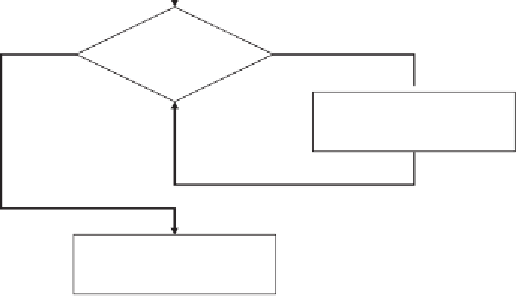Java Reference
In-Depth Information
The
for
loops we have been writing since Chapter 2 are fairly simple loops that exe-
cute a predictable number of times. Recall that we call them
definite
loops because we
know before the loops begin executing exactly how many times they will execute. Now
we want to turn our attention to
indefinite
loops, which execute an unknown number of
times. Indefinite loops come up often in interactive programs and file processing. For
example, you don't know in advance how many times a user might want to play a
game, and you won't know before you look at a file exactly how much data it stores.
The
while
loop is the first indefinite loop we will study. It has the following syntax:
while (<test>) {
<statement>;
<statement>;
...
<statement>;
}
The diagram in Figure 5.1 indicates the flow of control for the
while
loop. The
loop performs its test and, if the test evaluates to
true
, executes the controlled state-
ments. It repeatedly tests and executes if the test evaluates to
true
. Only when the
test evaluates to
false
does the loop terminate.
As Figure 5.1 indicates, the
while
loop performs its test at the top of the loop,
before the body of the loop is executed. A
while
loop will not execute its controlled
statements if its test evaluates to
false
the first time it is evaluated.
Here is an example of a
while
loop:
int number = 1;
while (number <= 200) {
number *= 2;
}
No
Yes
Is the test true?
Execute the
controlled statement(s)
Execute the statement
after the
while
loop
Figure 5.1
Flow of
while
loop




Search WWH ::

Custom Search